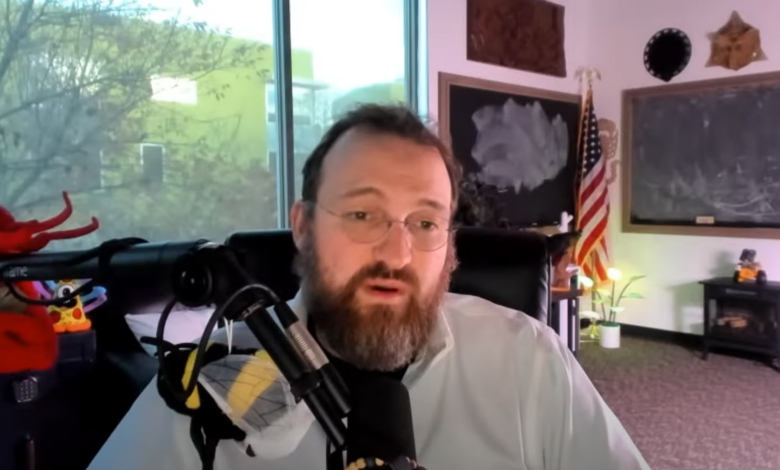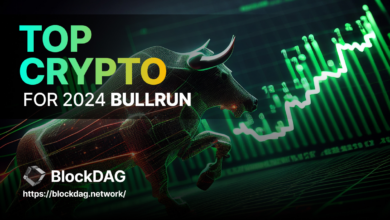
Charles Hoskinson Criticizes Wyoming Stable Token Commission’s Blockchain Choices
In a recent live broadcast titled “XRP and Wyoming,” Cardano’s founder, Charles Hoskinson, openly criticized the Wyoming Stable Token Commission’s decision-making process regarding blockchain network selections for the forthcoming Wyoming Stable Token (WST). The livestream, aired on November 25, 2024, delved into Hoskinson’s concerns about the commission’s non-transparent procedures and potential conflicts of interest.
Wyoming Stable Token: A New Chapter in U.S. Stablecoin History
The Wyoming Stable Token Commission has initiated the procurement process for the WST, anticipated to launch in 2025. This initiative aims to introduce the first fiat-backed and fully reserved stable token issued by a public entity in the United States. The commission plans to collaborate with qualified third-party vendors to oversee the development, deployment, and management of the WST and its underlying reserves.
Selected Blockchain Networks for WST
The commission’s Blockchain Selection Working Group has chosen Solana, Avalanche, Stellar, and Ethereum, along with Layer 2 networks like Polygon, Arbitrum, Base, and Optimism, for the initial deployment of the WST. However, Hoskinson described the selection process as “very opaque,” raising concerns about the transparency and inclusivity of the decision-making.
Hoskinson Joins Forces with the XRP Community
Expressing astonishment over the exclusion of major blockchain networks such as the XRP Ledger and Cardano, Hoskinson questioned why Ripple’s RLUSD was overlooked in favor of Stellar, despite Ripple’s significant market presence. “Apparently, Stellar can do things that Ripple cannot, according to the criteria,” Hoskinson remarked, highlighting Ripple’s $84 billion ecosystem with substantial trading volumes.
Cardano, boasting a market cap of $34 billion, was also excluded, alongside other notable platforms like Algorand, Tezos, and Aptos. Hoskinson lamented the exclusion of numerous viable ecosystems that weren’t even considered for proof of concept demonstrations.
Potential Conflicts of Interest in the Selection Process
Hoskinson suggested that former affiliations of key individuals within the commission might have influenced the selection process. He pointed out that Anthony Welfare, Executive Director of the Wyoming Stable Token Commission, has past ties with ConsenSys and the Polygon ecosystem. “It seems ConsenSys doesn’t get along well with Ripple,” Hoskinson mused, noting that one of the commissioners previously worked for Circle, a company known for its stablecoin, USDC.
This, according to Hoskinson, raises concerns about the selections potentially favoring networks associated with Circle and ConsenSys, creating an unfair competitive advantage. He argued that using public funds to benefit certain companies and ecosystems while excluding others under a guise of openness is unacceptable.
Demand for Transparency in Blockchain Network Selections
Hoskinson criticized the commission for not adhering to standard procurement procedures, which usually involve publishing detailed product requirements and allowing interested parties to submit proofs of concept. He emphasized the need for transparency and inclusivity, allowing all blockchain networks the opportunity to showcase their capabilities.
He further warned of possible legal implications stemming from the exclusion of certain networks, pointing out that those excluded might have grounds for a class action lawsuit due to the unfair competitive disadvantage created by the selection process.
Bitcoin’s Exclusion and Cardano’s Potential Contribution
Highlighting the exclusion of Bitcoin, the largest cryptocurrency by market cap, Hoskinson emphasized Cardano’s partnership with Bitcoin OS (BOS) as a missed opportunity for Bitcoin to have its first stablecoin via WST. “The decision to exclude Bitcoin, despite its prominence and the current president’s interest in establishing a strategic reserve, is concerning,” he noted.
Call to Action for the XRP Community
Urging the XRP community to join the cause, Hoskinson emphasized the need for fair and transparent processes in government-led cryptocurrency initiatives. “We won’t tolerate such opaque processes anymore,” he declared, promising change in 2025 and vowing to independently evaluate and publish qualifying networks.
As of now, ADA is trading at $0.9785, reflecting ongoing developments in the cryptocurrency landscape.








